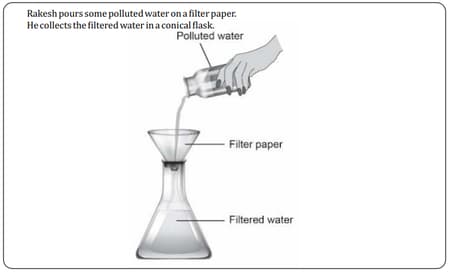Methods of Separation
Methods of Separation: Overview
This topic covers concepts, such as, Threshing, Methods of Separation, Applications of Filtration and Winnowing etc.
Important Questions on Methods of Separation
How can we separate grains and iron?

Is the filtered water suitable for drinking? Explain your answer.
The table shows the processes required to separate different mixtures in four separate jars.
| Jar | Jar | Jar | Jar | Jar |
| Process | Distillation | Filtration | Evaporation | Sublimation |
What process does not involve heating?
Decantation is used to separate common salt from its solution in water.
Decantation can be used to separate:
The _____ is a filter made by punching holes or crossing wires.
The strainer is a filter made by punching holes or crossing wires.
Filter paper is a filter with very fine pores in it.
_____ separates the lighter component in the winnowing.
The process by which chaff is separated from grain is called _____.
Threshing is used for separating grains from stalks.
Explain the use of threshing.
_____ is the process used to separate grains from stalk.
The process used to separate grains from stalks is
Take some muddy water in a beaker. Filter it in three different ways as shown below. Which do you think is the most effective method? Why?

Draw and label the process to remove the insoluble impurities from water.
_____ the technique used to separate solids from liquids.
Chromatography technique is used to separate sand and water.
Give an example of the following from our daily life.
Filtration in the kitchen.
Unscramble the following word to make meaningful word:
ESIERDU
